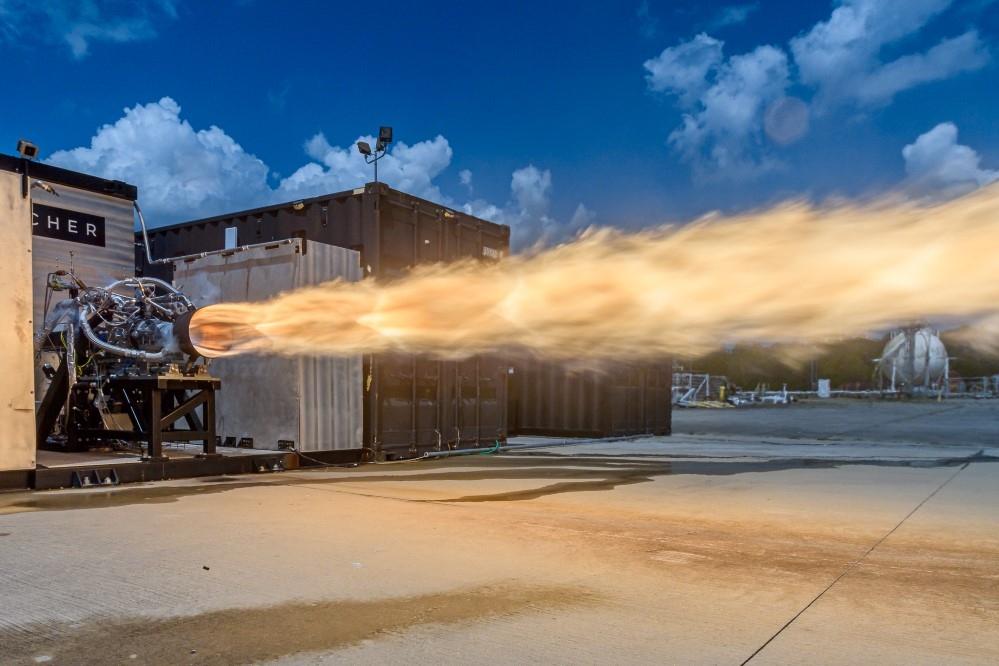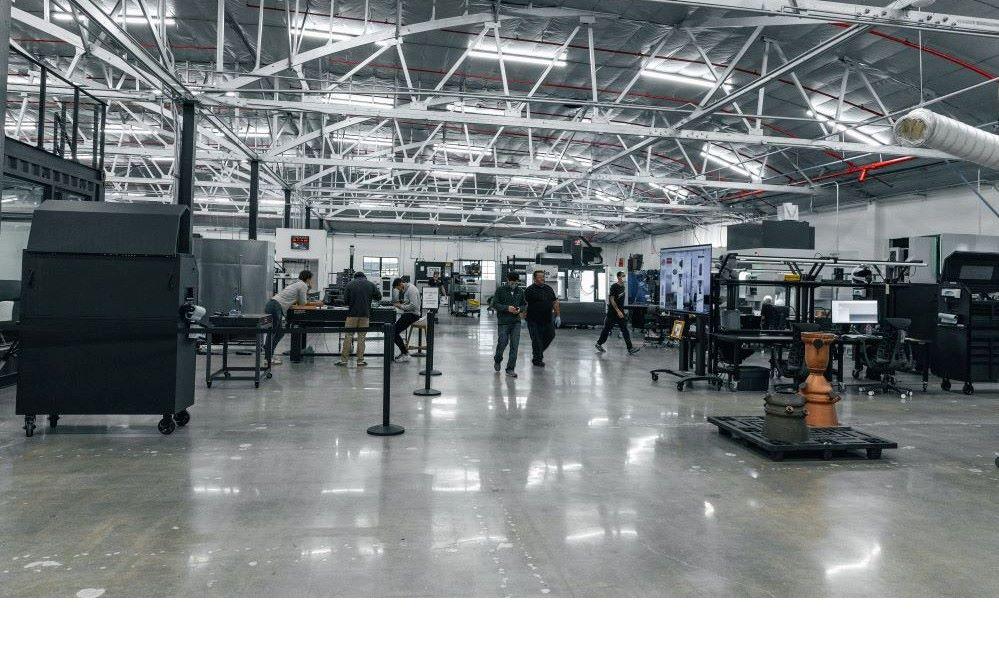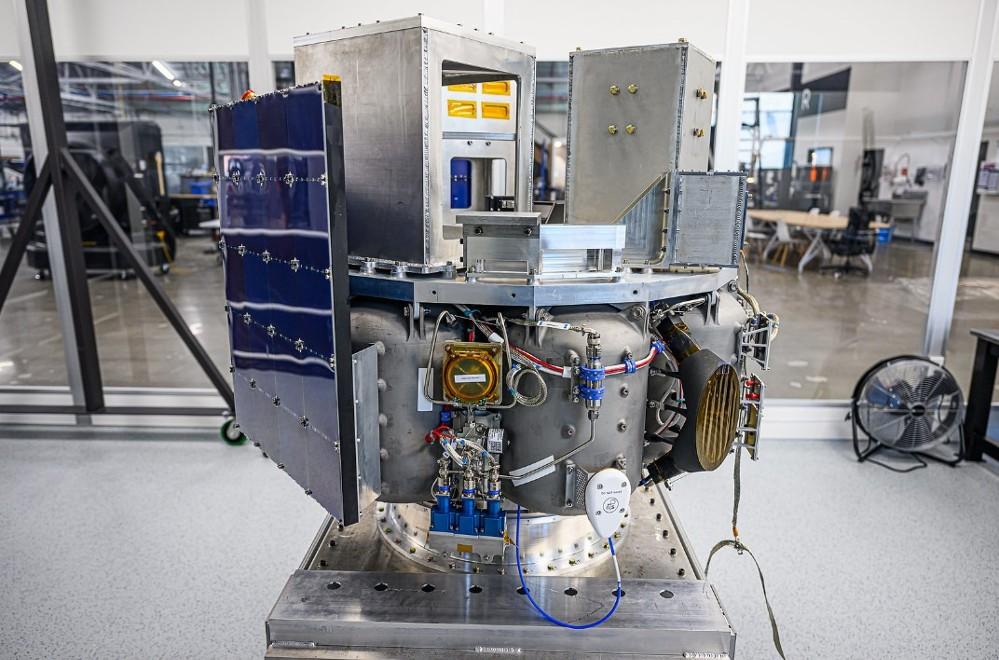- FMA
- The Fabricator
- FABTECH
- Canadian Metalworking
Our Publications
Categories
- Additive Manufacturing
- Aluminum Welding
- Arc Welding
- Assembly and Joining
- Automation and Robotics
- Bending and Forming
- Consumables
- Cutting and Weld Prep
- Electric Vehicles
- En Español
- Finishing
- Hydroforming
- Laser Cutting
- Laser Welding
- Machining
- Manufacturing Software
- Materials Handling
- Metals/Materials
- Oxyfuel Cutting
- Plasma Cutting
- Power Tools
- Punching and Other Holemaking
- Roll Forming
- Safety
- Sawing
- Shearing
- Shop Management
- Testing and Measuring
- Tube and Pipe Fabrication
- Tube and Pipe Production
- Waterjet Cutting
Industry Directory
Webcasts
Podcasts
FAB 40
Advertise
Subscribe
Account Login
Search
3D printing helps rocket maker meet vertical integration goals
Additive manufacturer prepares to send a space vehicle into orbit by year’s end
- By Kip Hanson
- August 23, 2022
- Article
- Additive Manufacturing

When Launcher’s E-2 rocket was tested at Stennis Space Center earlier this year, it generated an impressive 10 metric tons of thrust. All images: Launcher
The media is filled these days with stories of additively manufactured fuel injectors, propellant tanks, engine nozzles, and countless other examples of hugely complex rocket componentry—all intended to take satellites into orbit or people to the moon and beyond.
Tim Berry and his team play a part in many of these stories. Berry is the head of manufacturing at Launcher, a developer of rocket and satellite transfer vehicles/hosted payload platforms.
In April, the Hawthorne, Calif., company’s 3D-printed E-2 liquid rocket engine generated an impressive 10 metric tons of thrust (22,046 lbs.), 288s of sea-level ISP, and 97.5% c* during its first test firing at NASA’s Stennis Space Center. (Specific impulse, abbreviated ISP or Isp, and characteristic velocity, or c*, are measures of rocket engine efficiency.)
Click here to watch a video of the Stennis Space Center test.
Additionally, Launcher’s Orbiter transfer vehicle/hosted payload platform, or space tug, is scheduled to reach orbit later this year aboard SpaceX’s Falcon 9 Transporter-6 ride-share launch. The majority of the tug is 3D-printed.
Multidisciplinary Manufacturing
Berry considers himself one of metal 3D printing’s biggest fans. But he’s also unafraid to switch gears as needed in favor of more traditional manufacturing technologies—and vice versa.
“Brackets, for instance, are a toss-up,” he said. “So if we’re over capacity in the machine shop, we might slide them into one of the 3D printers. We make decisions like these based on available capacity and the need to keep our equipment operating as much as possible.
“Having that ability is one of the beauties of vertical integration. Because of it, we outsource very little,” Berry said.
That’s an understatement.
Launcher’s machining and fabrication area would make many shops envious. The equipment list includes CNC and manual lathes; 3- and 5-axis machining centers; a gantry-style CNC mill; TIG, MIG, and orbital tube welders; a cleaning/coating line; tube bending and flaring equipment; and the usual assortment of manual tools found in any metalworking facility.

The E-2 engine’s liquid-oxygen-cooled chamber was printed as one piece from a copper alloy on an AMCM printer. Launcher printed the co-axial injector on a Velo3D Sapphire machine.
Launcher’s Tim Berry considers himself one of metal 3D printing’s biggest fans. But he’s also unafraid to switch gears as needed in favor of more traditional manufacturing technologies—and vice versa.
The company uses all that equipment to join rocket components, build test stands and assembly fixtures, fabricate fuel lines and exhaust systems, and finish-machine large numbers of metal 3D-printed components.
“We also have a wire EDM we use to make parts, but most of its time is spent removing 3D-printed parts from build plates,” Berry added.
LPBF Printers Used
Berry estimates that 70% of Launcher’s hardware is first printed on one of its three laser powder bed fusion (LPBF) machines. There’s a pair of Sapphire 3D printing systems from Velo3D. One is dedicated to building Inconel 718 turbopump components and piece-parts for the Orbiter space tug, and the other “cranks out” titanium propellant tanks around the clock.
“On every ninth build, we print a thrust structure that holds the engine,” he added.
Launcher’s third printer—an EOS M300—is a switch hitter. It alternately produces titanium, aluminum, and copper parts, and it may be used in the near future to print some of the less-expensive refractory metals and high-strength aluminum alloys.
A fourth LPBF printer is scheduled to arrive soon. It’s a large-format (450- by 450-by 1,000-mm) LPBF system called the M4K that EOS Group subsidiary AMCM GmbH built.
“Our company CEO and founder, Max Haot, was the inspiration for the M4K,” said Berry. “He didn’t want to take the same approach as other engine builders, which is to print a bunch of smaller components and then braze or bolt them together. Max and our chief designer, Igor Nikishchenko, wanted a monolithic structure for greater simplicity, strength, and reliability, so he worked with EOS to develop a custom, large-format machine.”
Berry added that other rocket companies have followed Launcher’s lead and are moving to monolithic chamber/nozzle prints on larger, newly available machines.
Stay Out of Corners
With delivery of the M4K will come a healthy supply of C-18150. This copper-chromium-zirconium alloy reportedly costs far less and has material properties only slightly different than the unofficial industry standard for rocket engines, GRCop-42.

Launcher’s well-equipped machine shop and fabricating area plays an important role in getting products airborne.
“You don’t want to design yourself into a corner where it becomes necessary to use a super-expensive metal like GRCop—unless you absolutely need it—something that many of our competitors have done,” said Berry, who added, “I like to joke that I’d make a rocket out of papier-mâché if it could fly reliably.”
“You don’t want to design yourself into a corner where it becomes necessary to use a super-expensive metal like GRCop unless you absolutely need it.”—Tim Berry, Launcher
Unorthodox thinking is commonplace at Launcher. CEO Haot tells staff members to design for the tools they have available—a directive that’s been taken to heart. Not only do the designers adjust their component designs and manufacturing processes to keep products in-house whenever possible, they have also developed their own engineering software for cooling-channel analysis and rocket engine simulation.
Such efforts provide benefits far beyond saving a buck. They’re about getting spacecraft aloft quickly, safely, and cost-effectively in a highly competitive market. That said, there are no compromises when it comes to performance, and the Launcher crew is always looking for ways to further optimize their rocket propulsion and satellite delivery systems, said Berry.
He credits Haot and designer Nikishchenko for this mindset. “Their mantra since the company’s beginning has been one of high performance and low-cost access to space.”
About the Author

Kip Hanson
About the Publication
- Podcasting
- Podcast:
- The Fabricator Podcast
- Published:
- 04/16/2024
- Running Time:
- 63:29
In this episode of The Fabricator Podcast, Caleb Chamberlain, co-founder and CEO of OSH Cut, discusses his company’s...
- Trending Articles
- Industry Events
16th Annual Safety Conference
- April 30 - May 1, 2024
- Elgin,
Pipe and Tube Conference
- May 21 - 22, 2024
- Omaha, NE
World-Class Roll Forming Workshop
- June 5 - 6, 2024
- Louisville, KY
Advanced Laser Application Workshop
- June 25 - 27, 2024
- Novi, MI



























